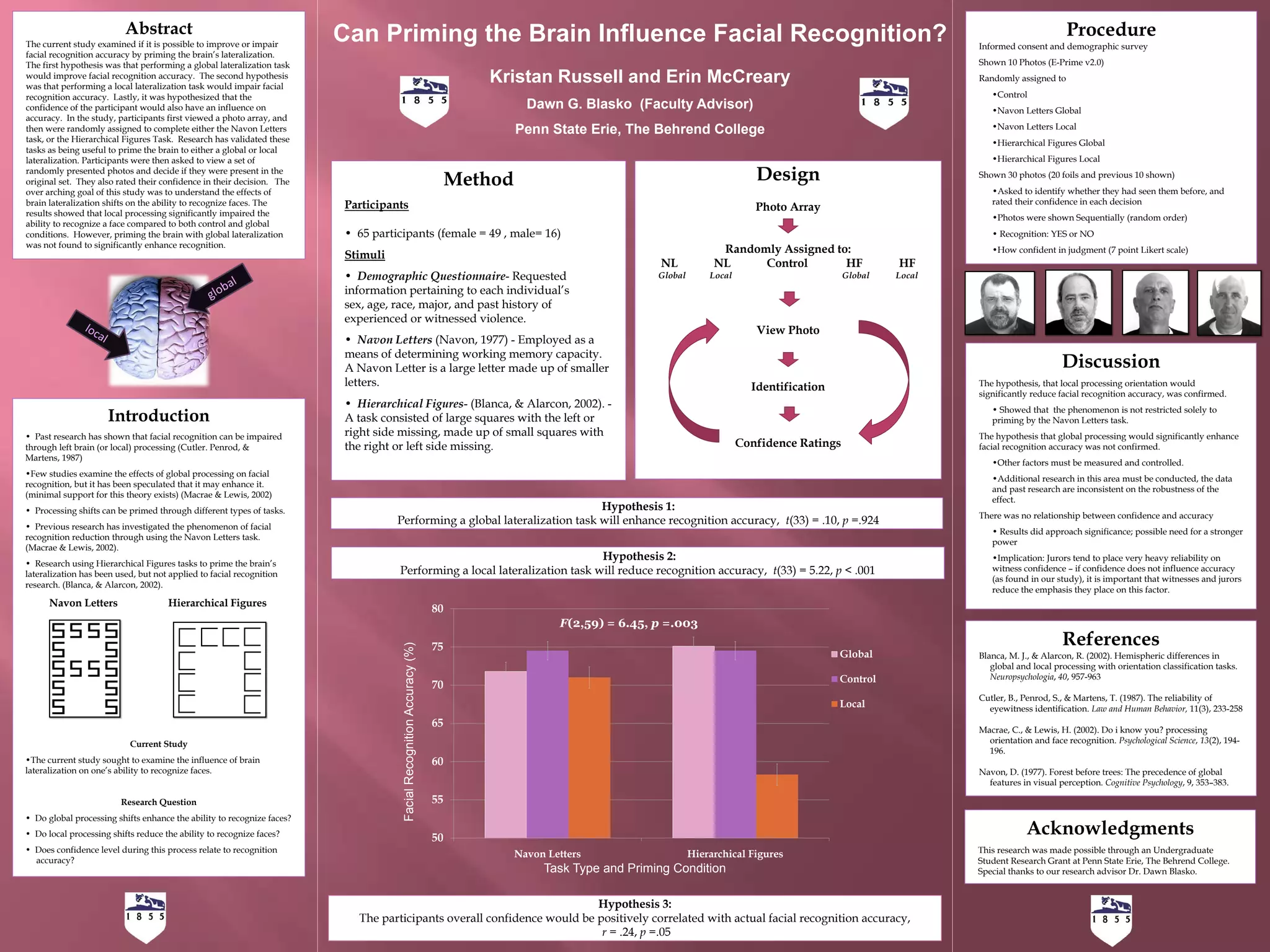1) The study examined whether priming the brain for global or local processing through tasks like the Navon Letters task or Hierarchical Figures task could influence facial recognition accuracy.
2) Participants viewed photos then did a priming task and viewed more photos to identify if they were in the original set.
3) Results showed priming for local processing significantly impaired facial recognition compared to control and global conditions, but global priming did not significantly enhance recognition.
